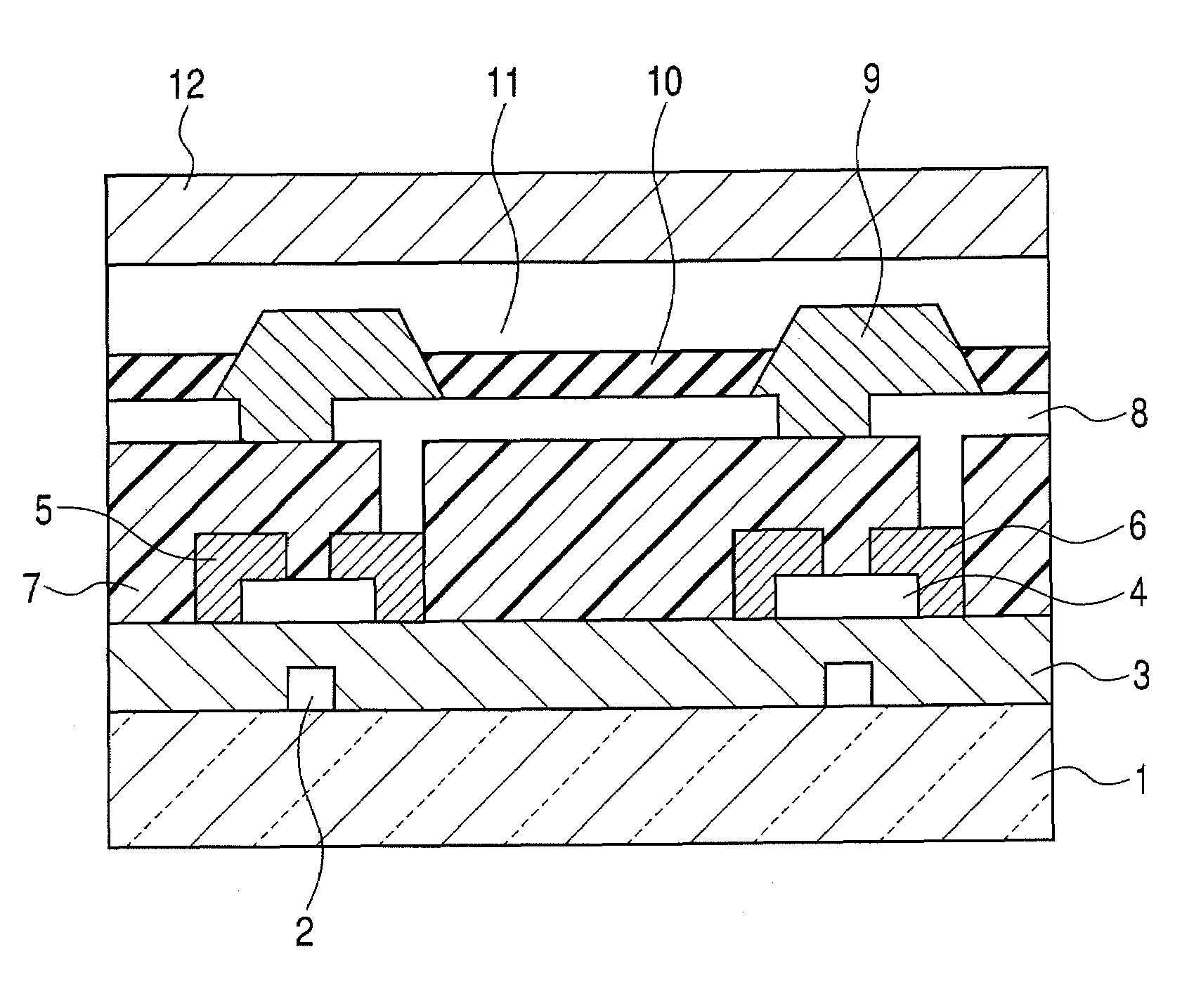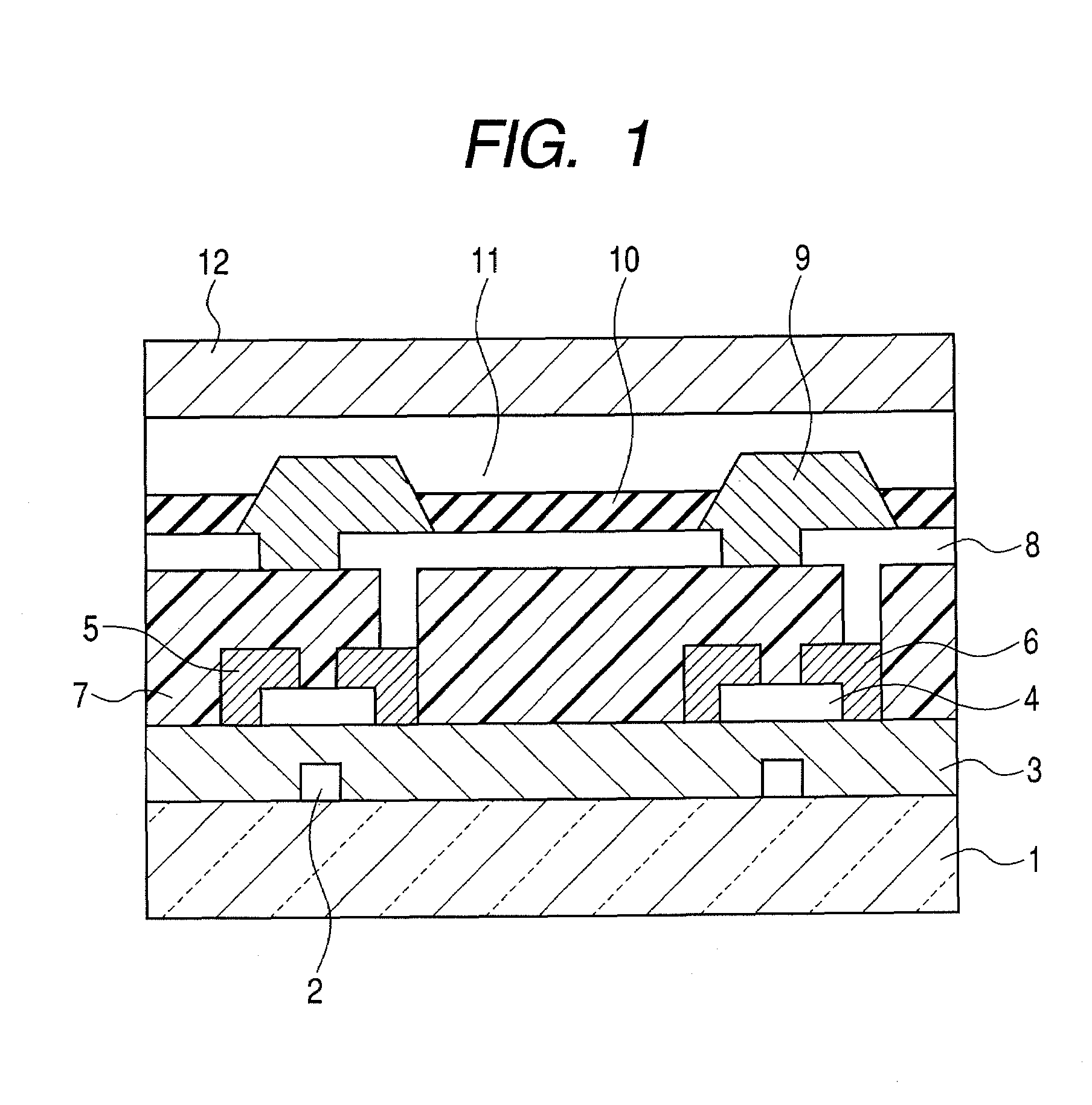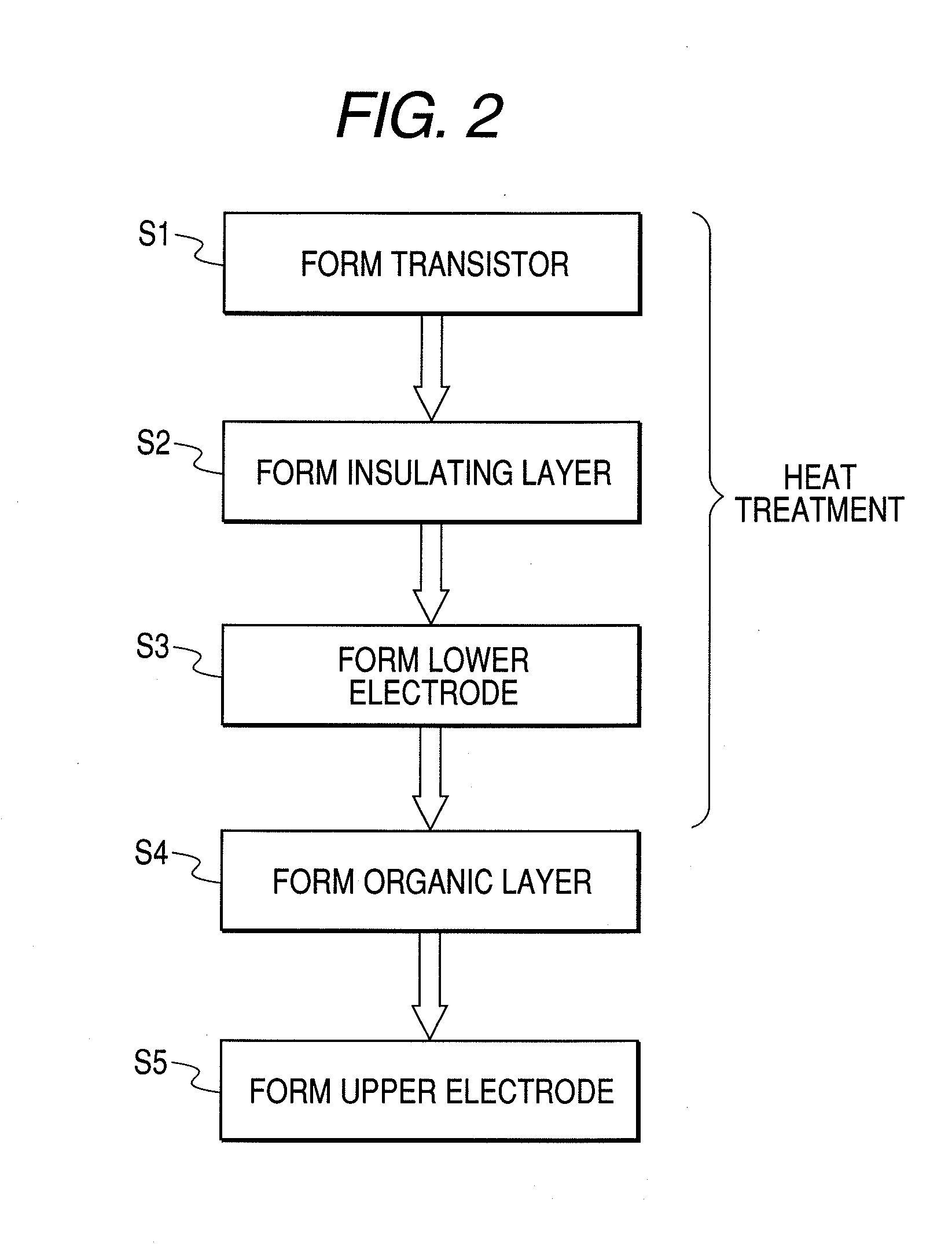Light-emitting apparatus and production method thereof
a technology of light-emitting apparatus and production method, which is applied in the direction of semiconductor devices, solid-state devices, transistors, etc., can solve the problems of high cost, increased production cost, and increased production cost, so as to reduce the aperture ratio of the device, the effect of suppressing the degradation of the organic layer
- Summary
- Abstract
- Description
- Claims
- Application Information
AI Technical Summary
Benefits of technology
Problems solved by technology
Method used
Image
Examples
embodiment 1
[0050]In this embodiment, a description is made of a case where OS-TFTs of an amorphous In—Ga—Zn—O system are used as switching devices, and an organic EL display panel according to a typical constitution of the present invention, that is, a constitution in which organic EL devices are stacked on the same substrate as the substrate on which the OS-TFTs are formed is produced. The term “In—Ga—Zn—O system” herein employed refers to an oxide-based material containing at least In, Ga, and Zn.
[0051]FIG. 1 is a cross-sectional view illustrating the constitution of a light-emitting apparatus as an embodiment of the present invention.
[0052]In FIG. 1, reference numeral 1 denotes a glass substrate as a substrate; 2, a gate electrode; 3, a gate insulating layer; 4, an oxide semiconductor layer (semiconductor layer); 5, a drain electrode; 6, a source electrode; 7, an insulating layer; 8, a transparent anode as a lower electrode; 9, a device separation film that can be provided as needed; 10, an...
example
[0128]Hereinafter, an example of a production method in which organic EL devices and OS-TFTs are mounted on the same substrate will be described with reference to FIG. 5. The maximum temperature which can be reached during a process for the formation of the organic EL device is 150° C.
[0129]In addition, in order that the device may be prevented from unnecessarily adsorbing moisture owing to exposure to the atmosphere, the device is kept so as not to be brought into contact with the atmosphere by appropriately using, for example, a transfer vessel except during a process utilizing a photolithographic method and a wet process.
(Formation of Field Effect Transistor)
[0130]A glass substrate 1 (1737 (trade name); manufactured by Corning Inc.) is selected as a substrate on which a film is to be formed. Before the formation of a film, the substrate is ultrasonically degreased and cleaned sequentially with acetone, IPA, and ultrapure water for 5 minutes each, and is then subjected to a heat t...
PUM
| Property | Measurement | Unit |
|---|---|---|
| Temperature | aaaaa | aaaaa |
| Semiconductor properties | aaaaa | aaaaa |
Abstract
Description
Claims
Application Information
 Login to View More
Login to View More - R&D
- Intellectual Property
- Life Sciences
- Materials
- Tech Scout
- Unparalleled Data Quality
- Higher Quality Content
- 60% Fewer Hallucinations
Browse by: Latest US Patents, China's latest patents, Technical Efficacy Thesaurus, Application Domain, Technology Topic, Popular Technical Reports.
© 2025 PatSnap. All rights reserved.Legal|Privacy policy|Modern Slavery Act Transparency Statement|Sitemap|About US| Contact US: help@patsnap.com



